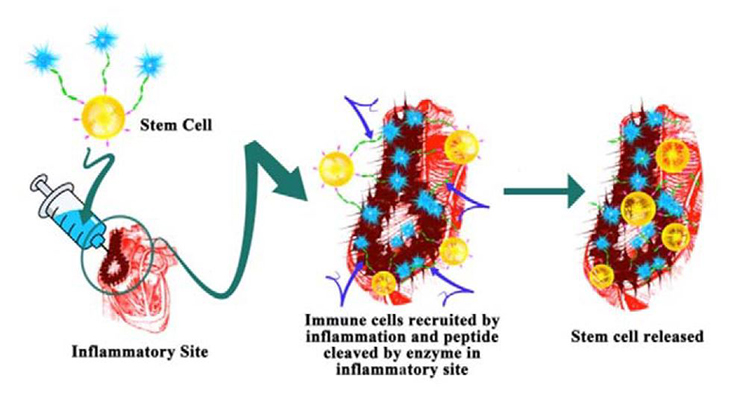Immune-Cell-Mediated Stem Cell Delivery for Tissue Regeneration
ID# 2015-4312
Technology Summary
Using click chemistry to enable specific bioconjugations, Penn State researchers have leveraged the body’s own immune cells to transform the way stem cells are delivered for tissue engineering. For instance, enzyme-sensitive degradable peptides can be used to link stem cells and immune cells together. When these cell assemblies are injected into muscle tissue, such as ischemic cardiac tissue, the immune cells bind and reside in the inflamed cardiac tissue, improving the immune response to promote vascularization and wound healing. Furthermore, the bound stem cells are retained at the site of inflammation and will eventually be released from the immune cells through degradation of the peptide linker by matrix metalloproteinases in ischemic cardiac tissue. The figure above is an illustration of immune-cell-mediated stem cell delivery for cardiac tissue regeneration.
Application & Market Utility
Despite the enormous potential of tissue engineering, there are currently no successful strategies to repair thick, highly vascularized tissues (e.g., regeneration of ischemic cardiac tissue). This technology addresses this previously unmet need by providing a more efficient means for tissue regeneration by coupling stem cell delivery to the body’s immune response.
Next Steps
Seeking start-up investment, research collaboration, and/or licensing opportunities.

